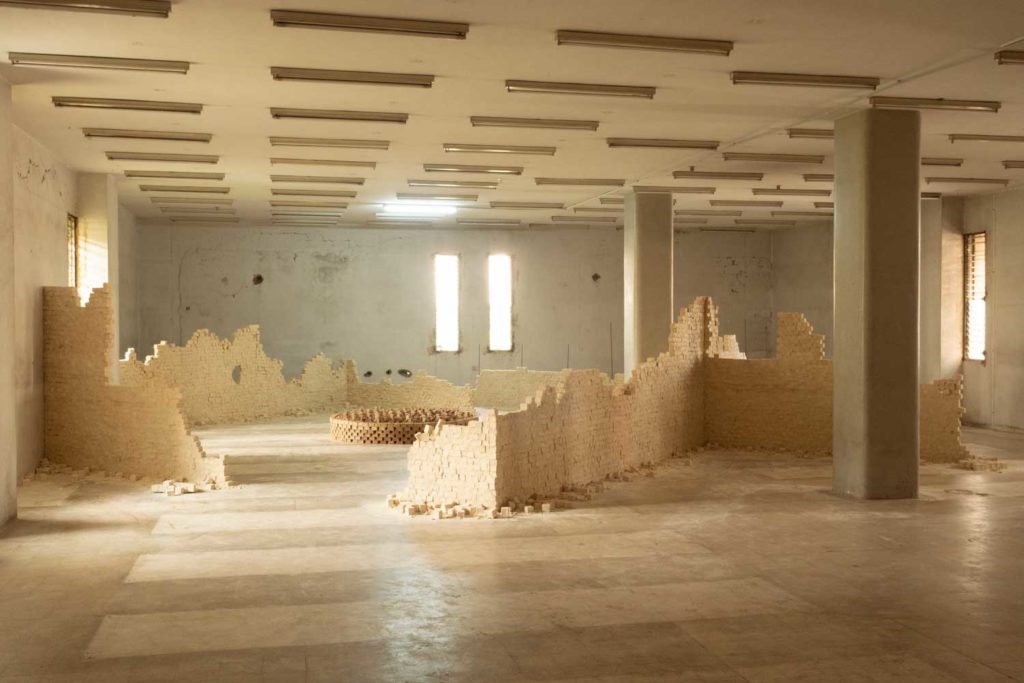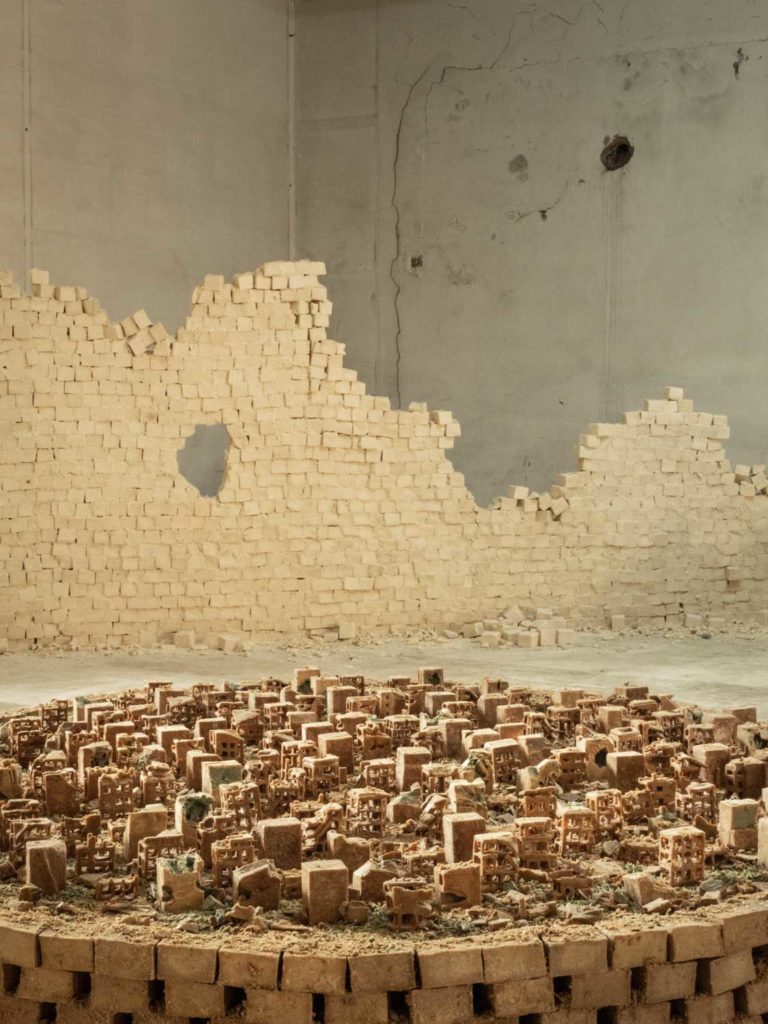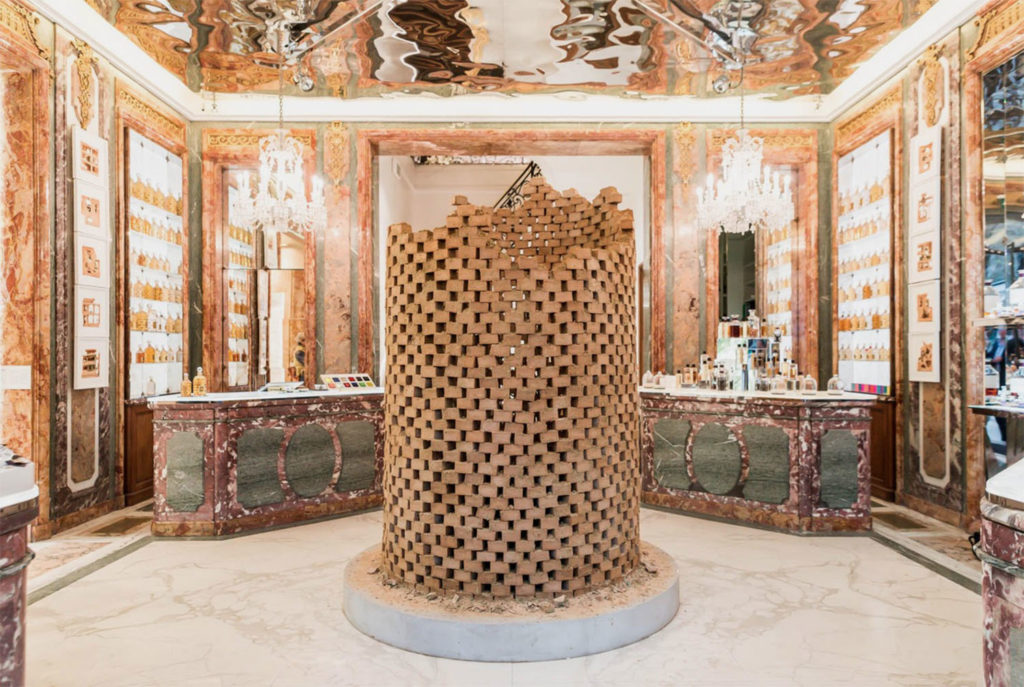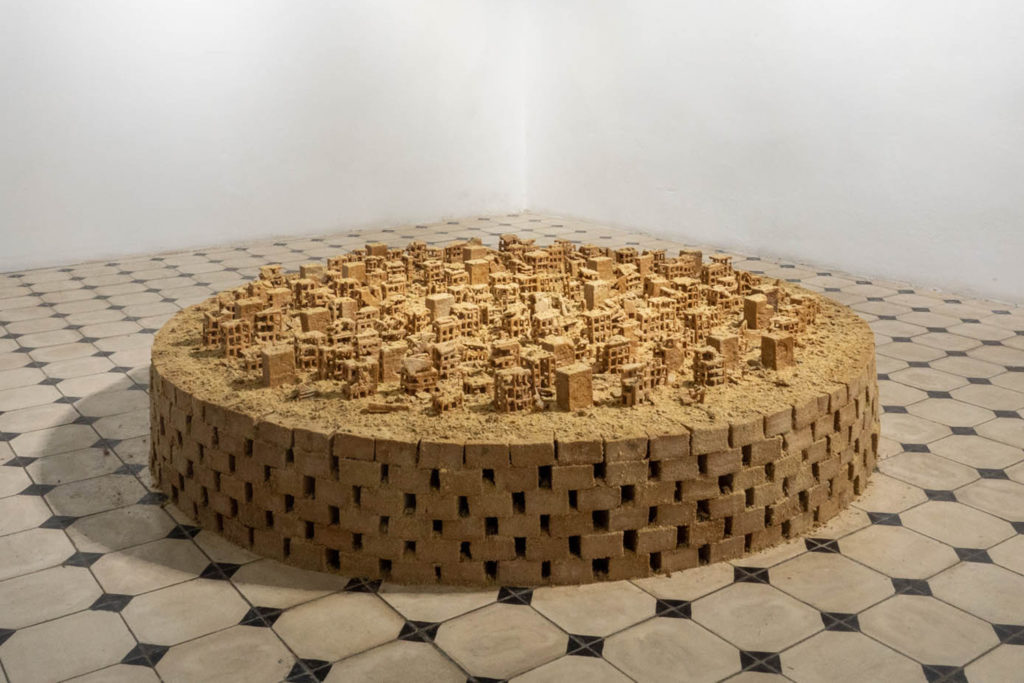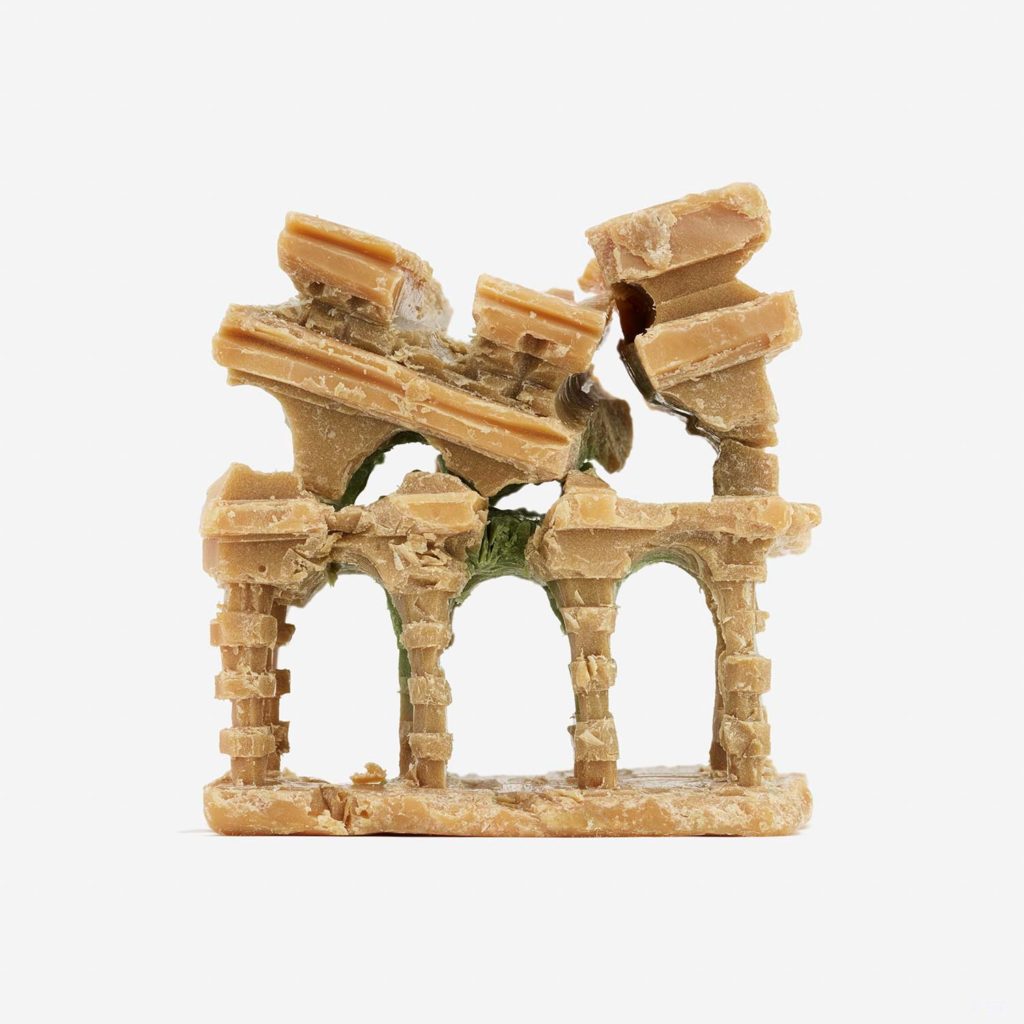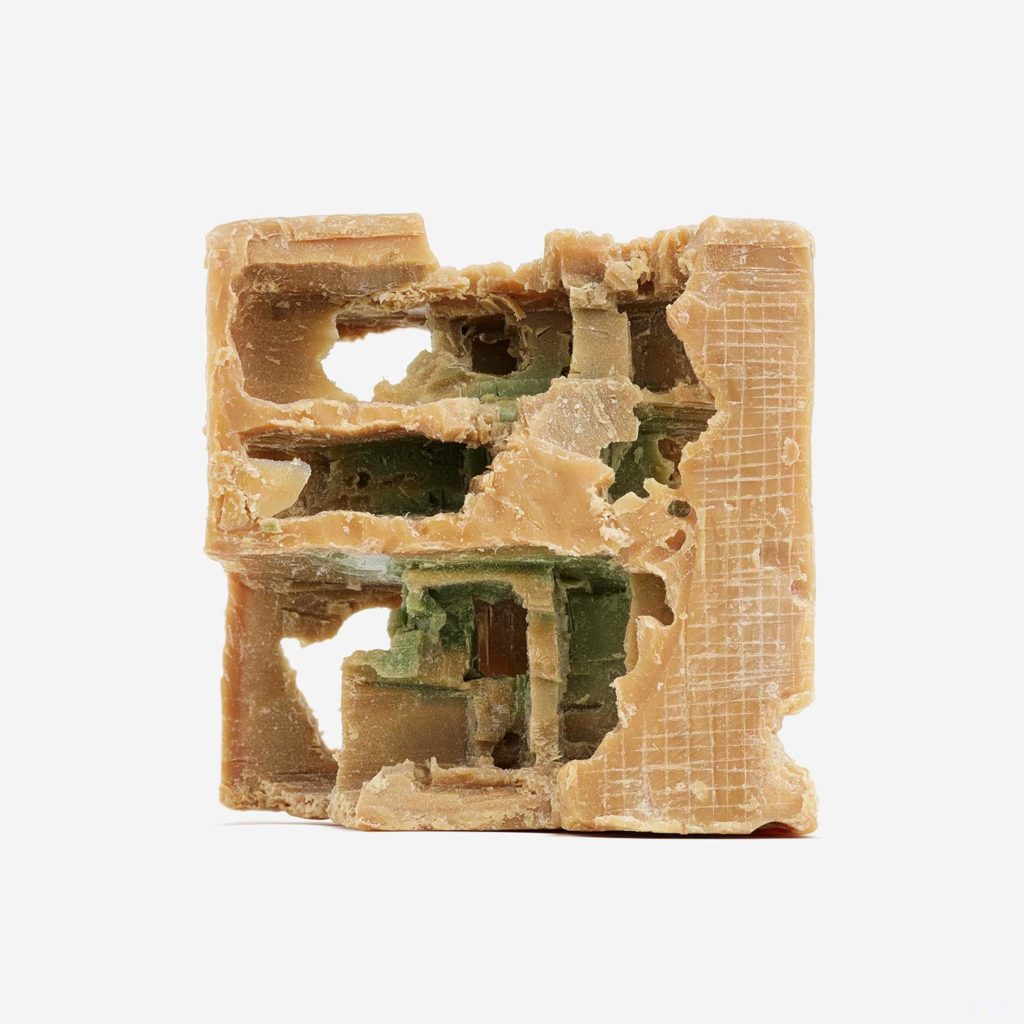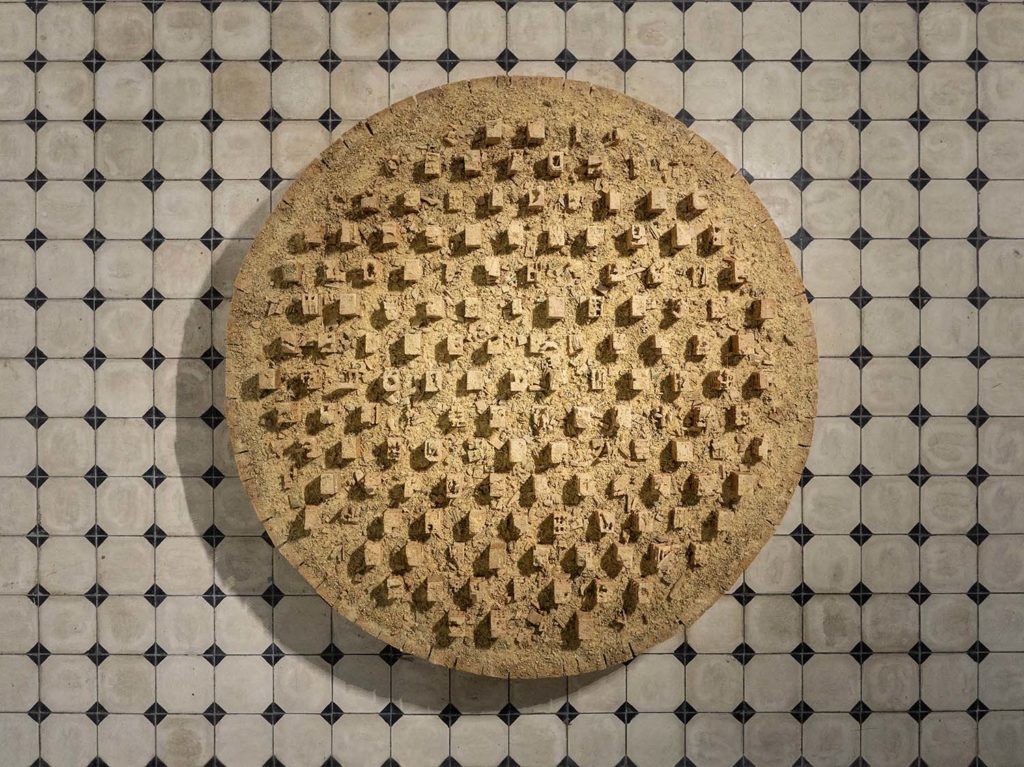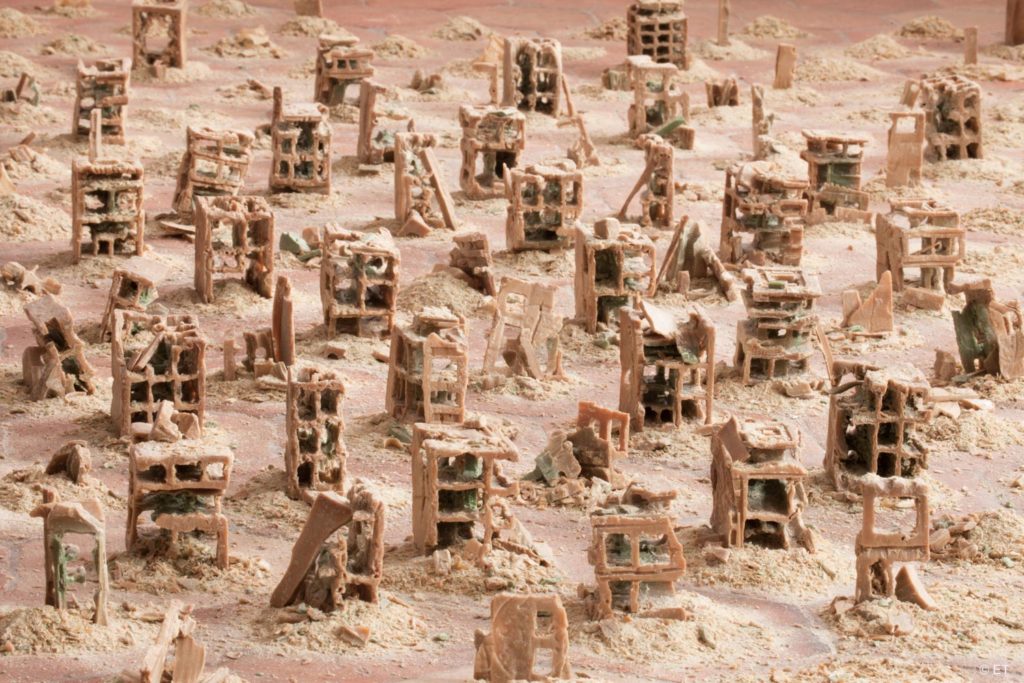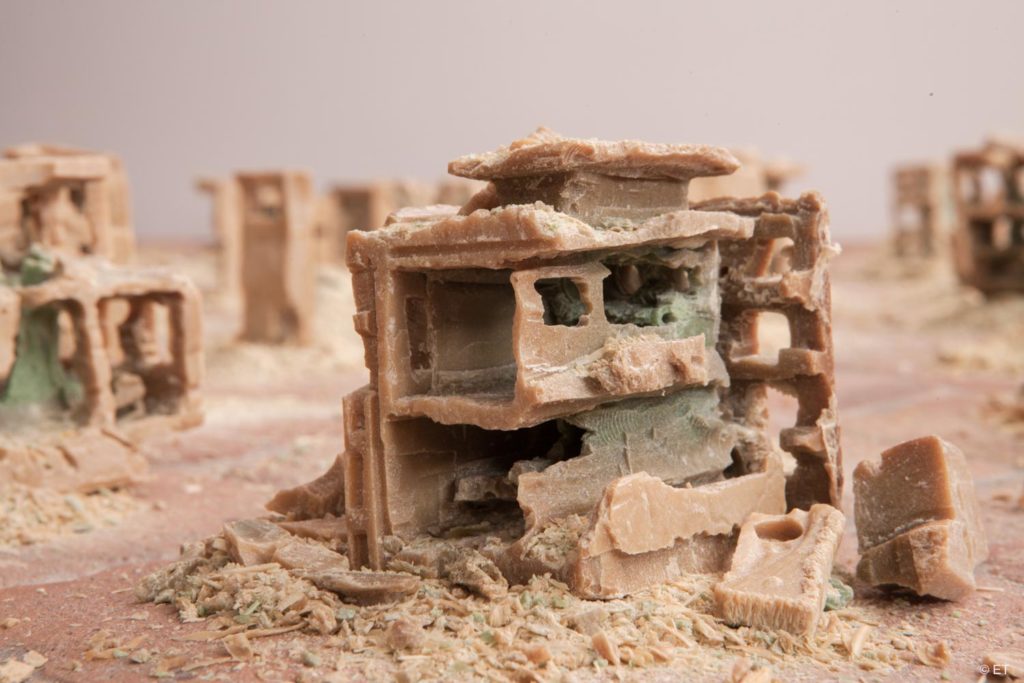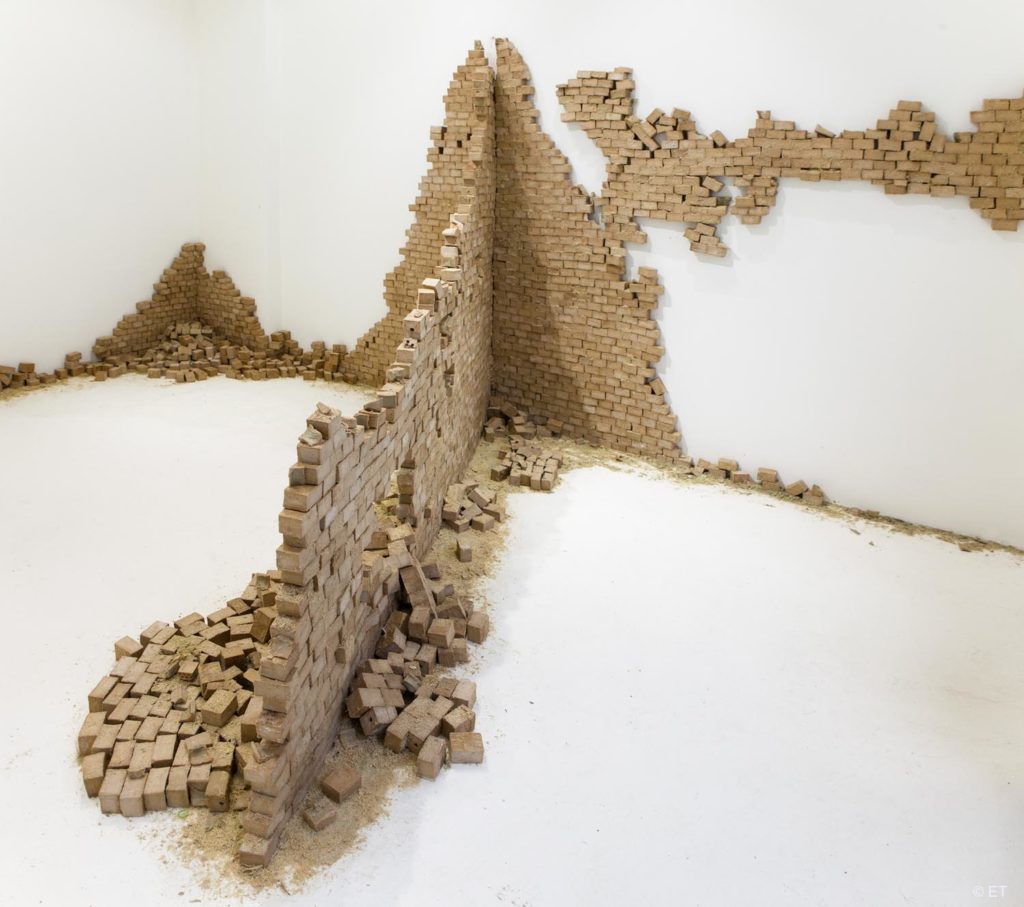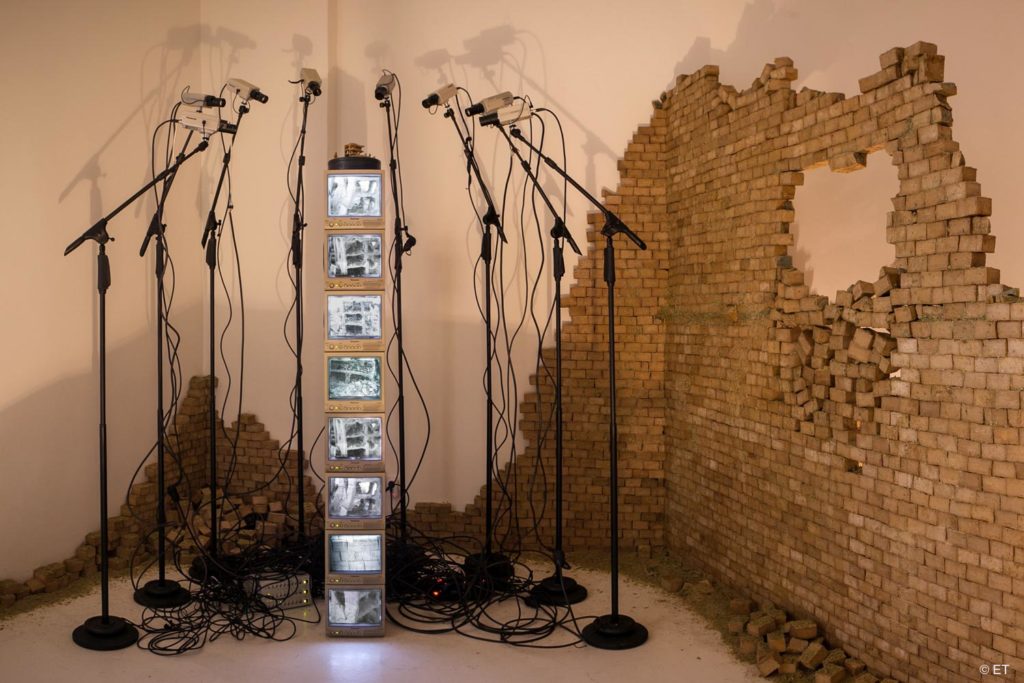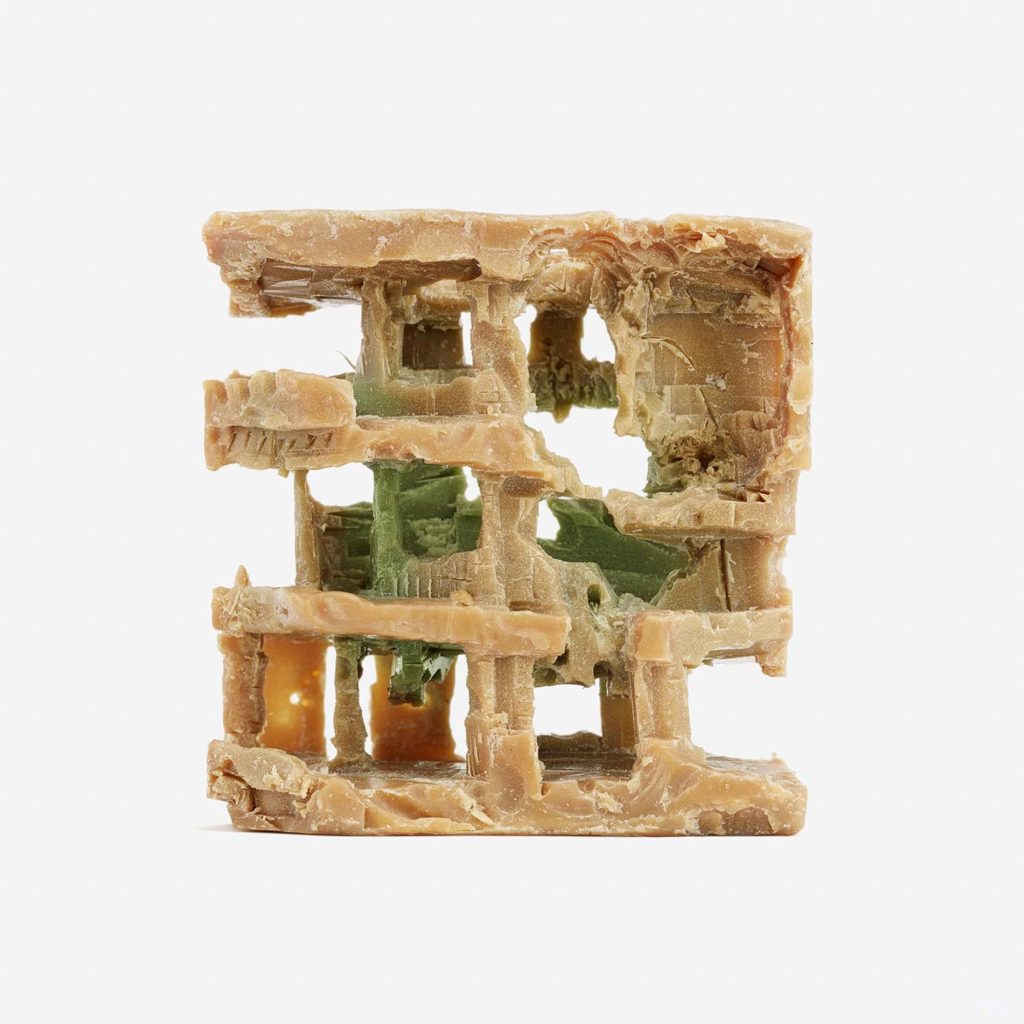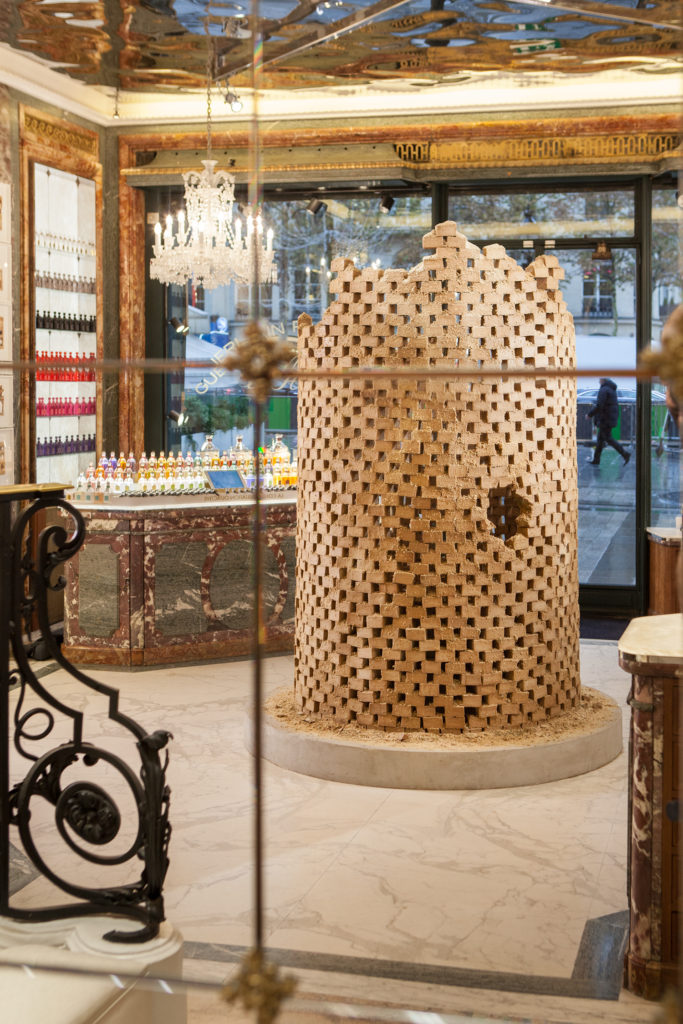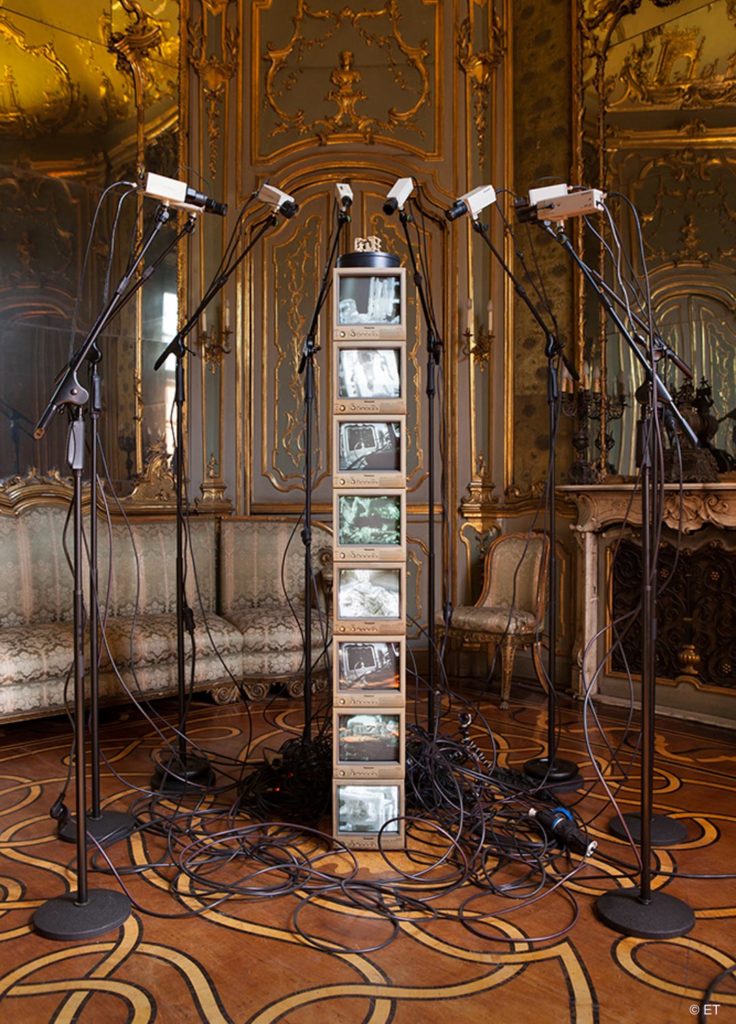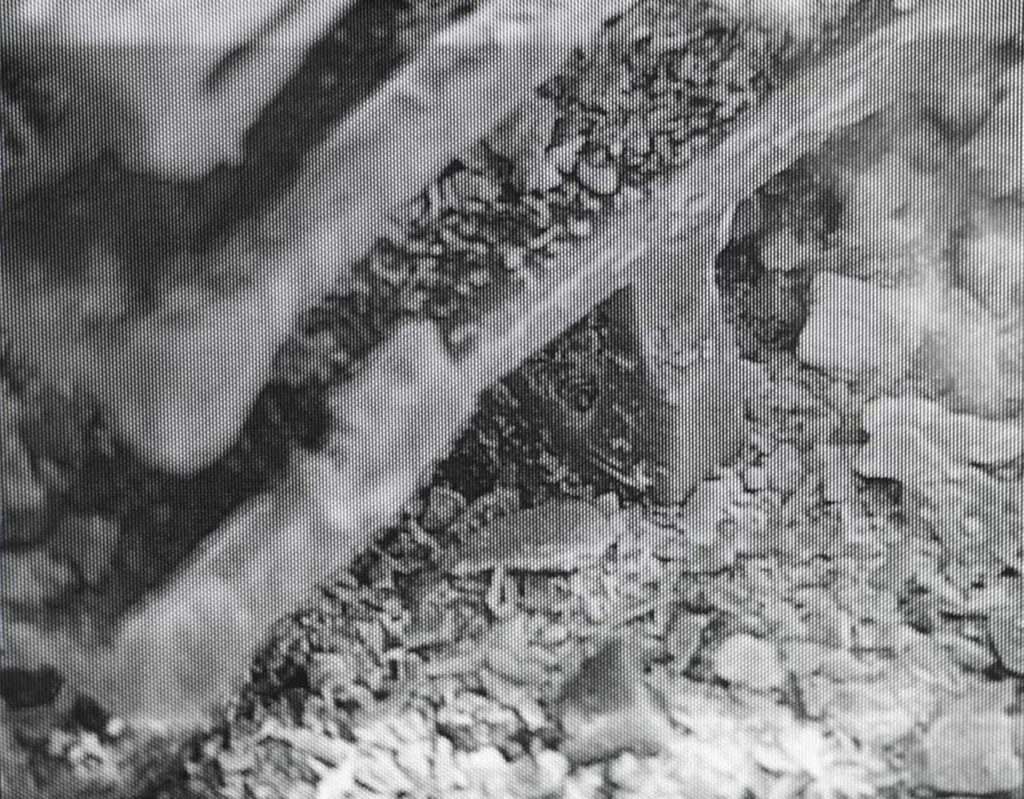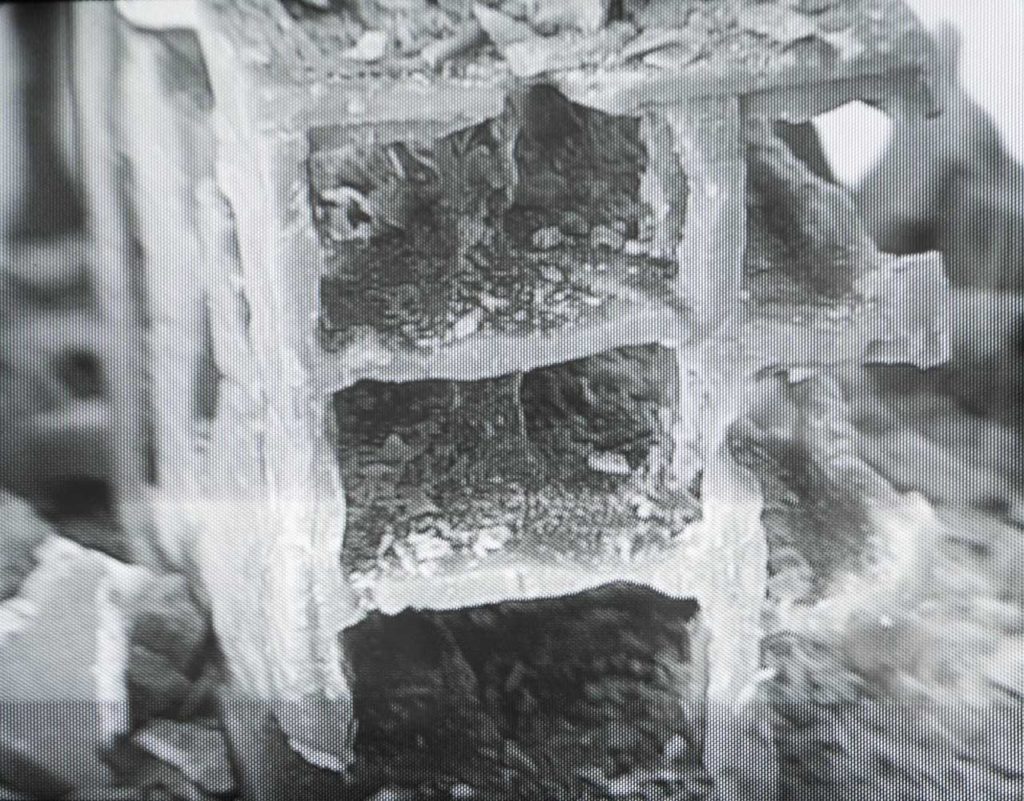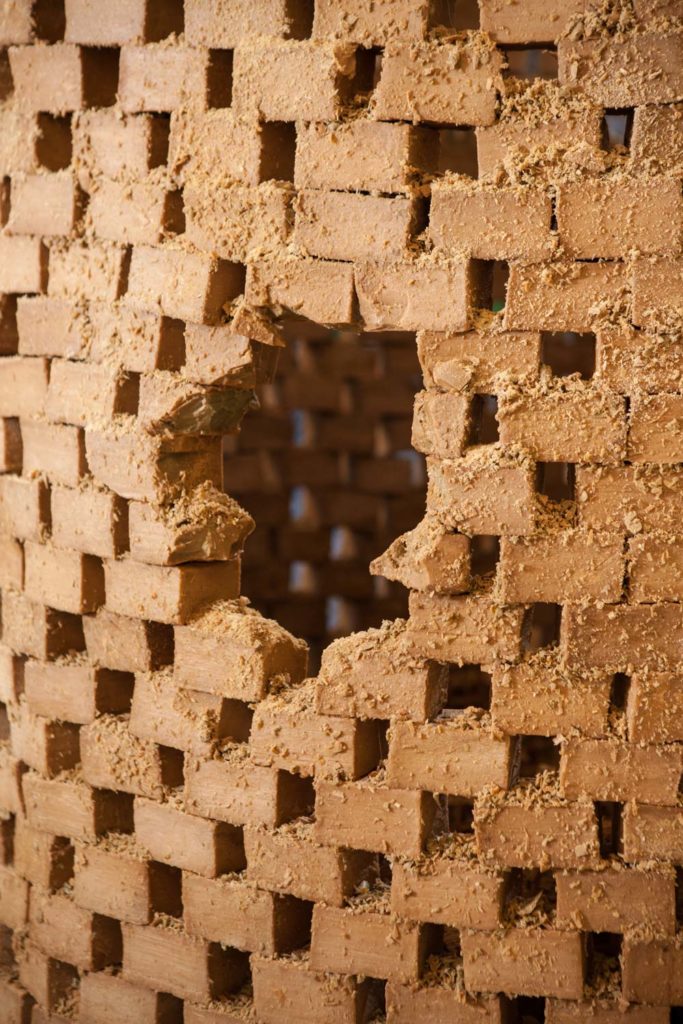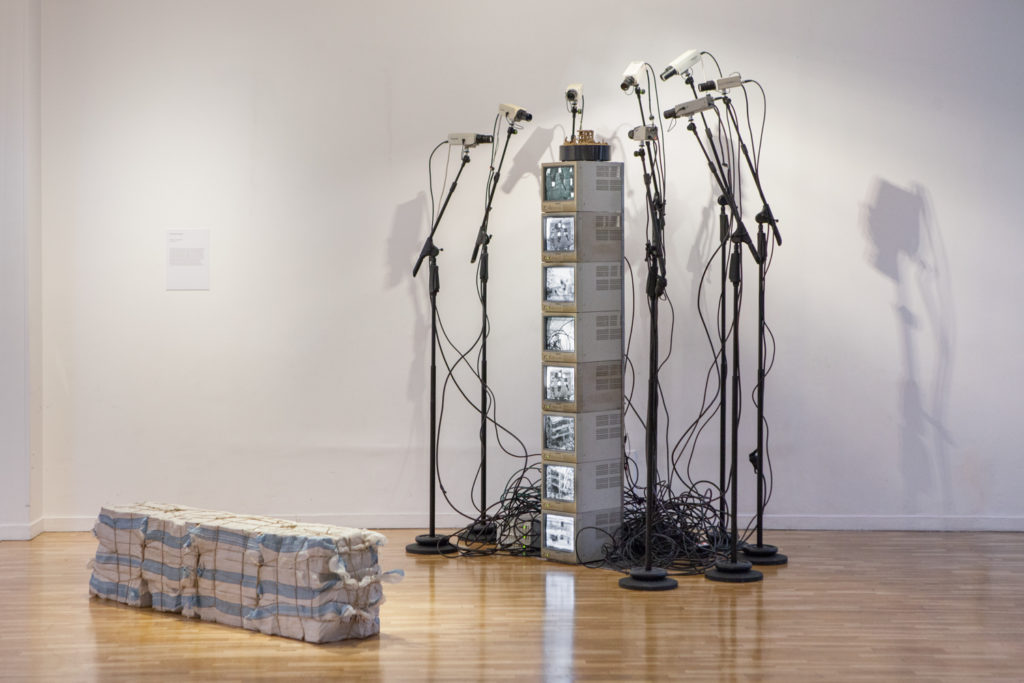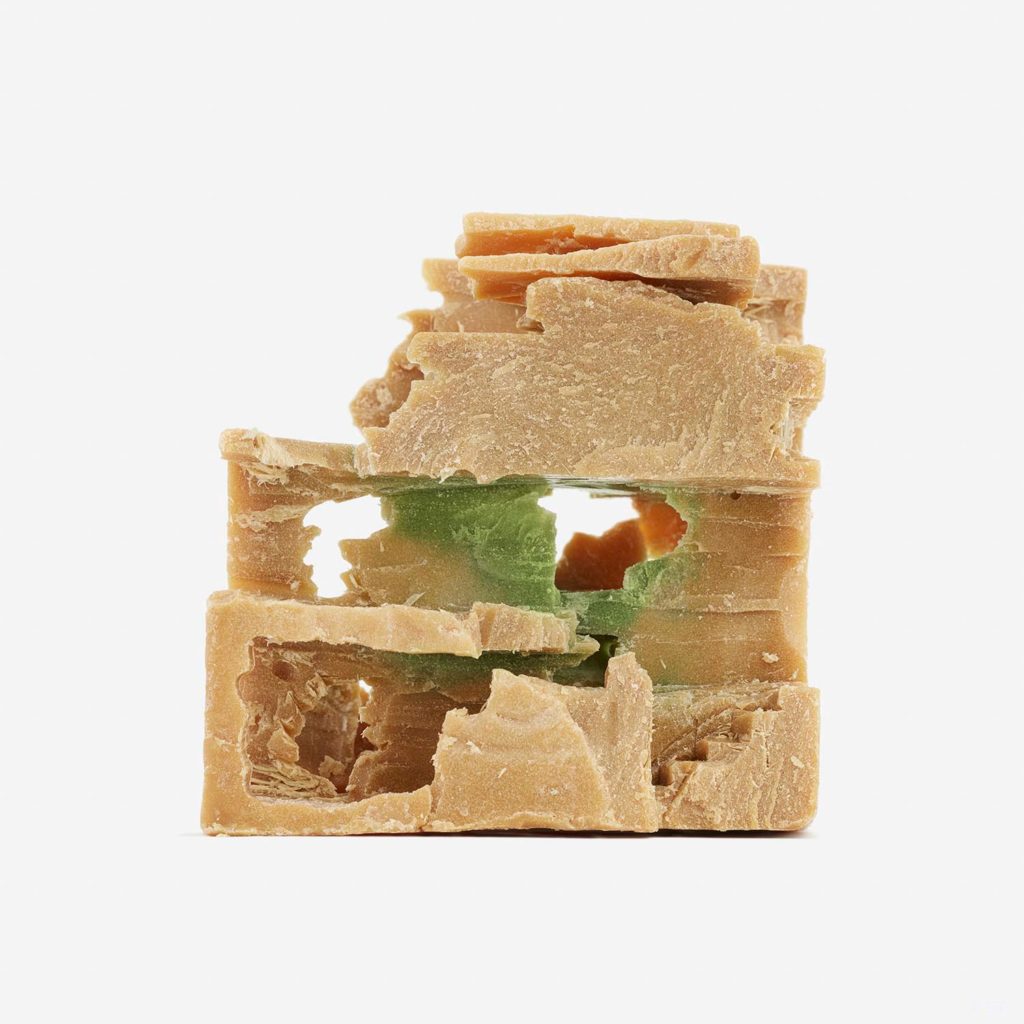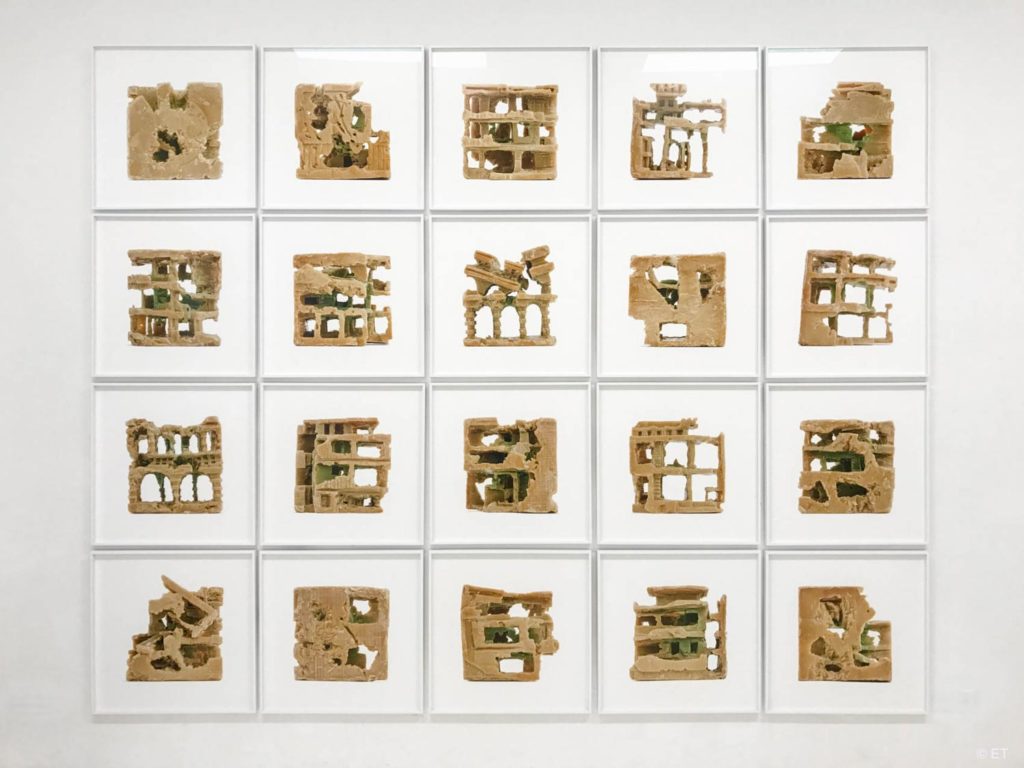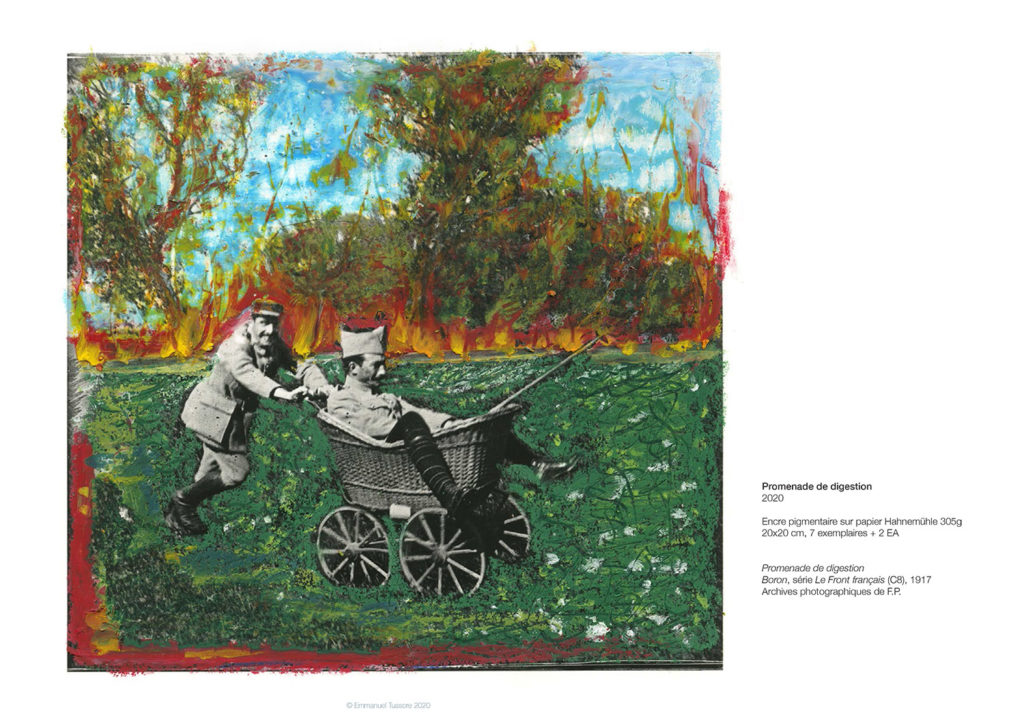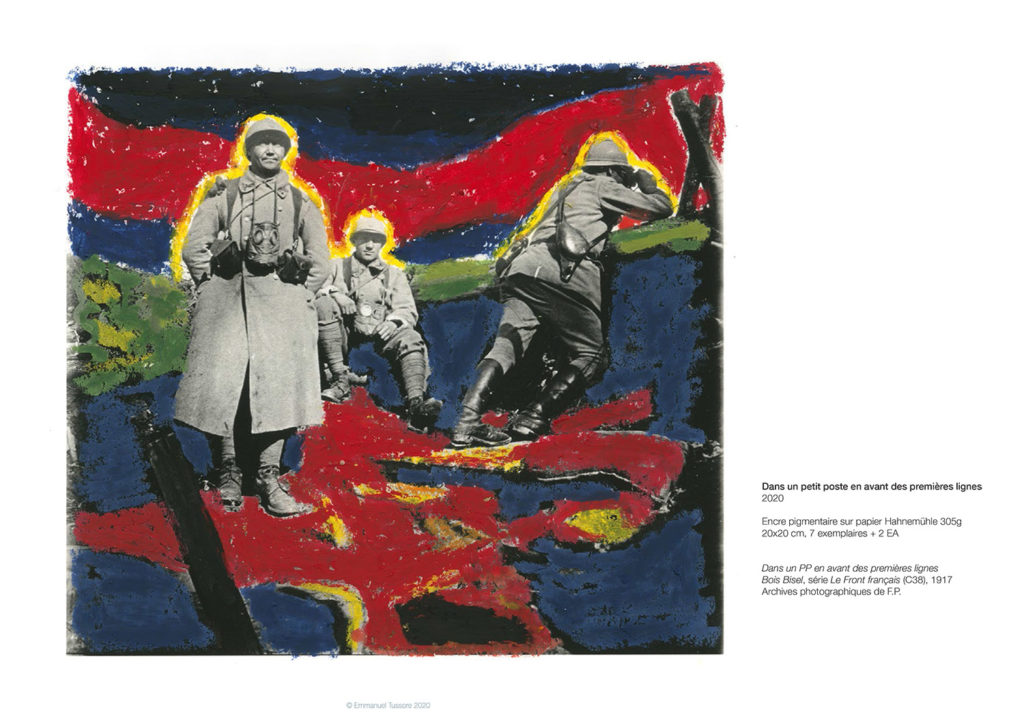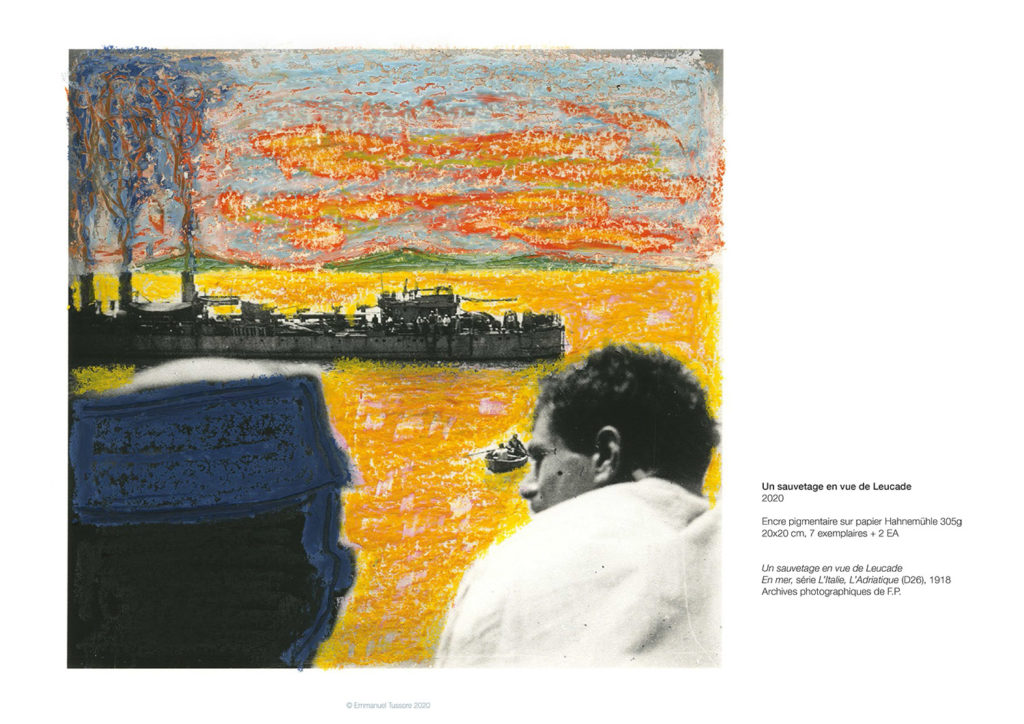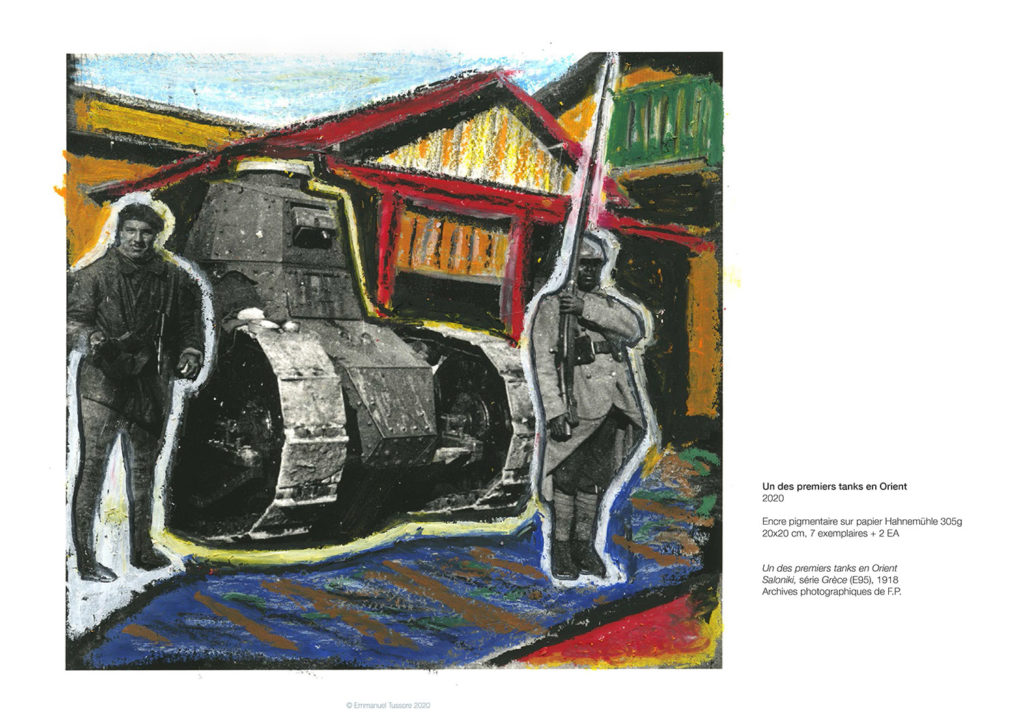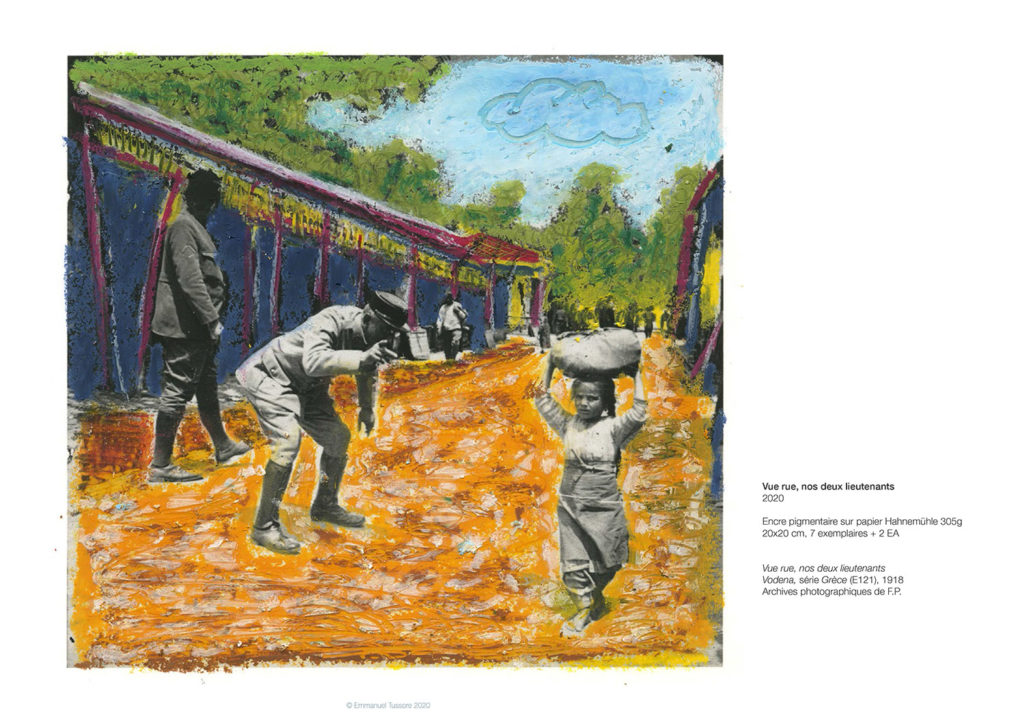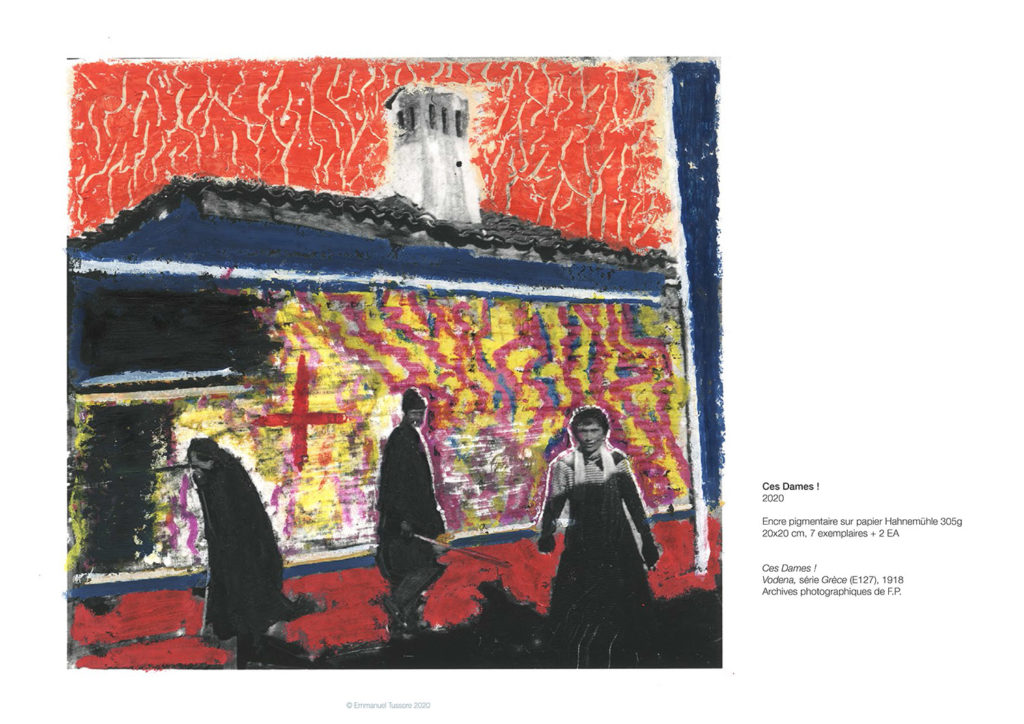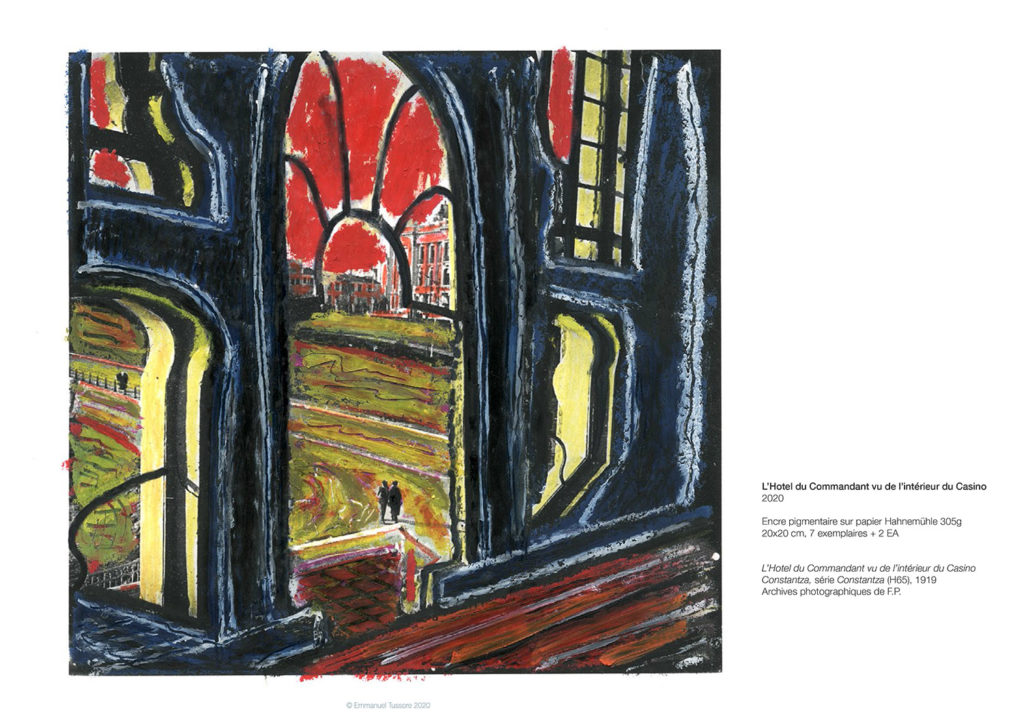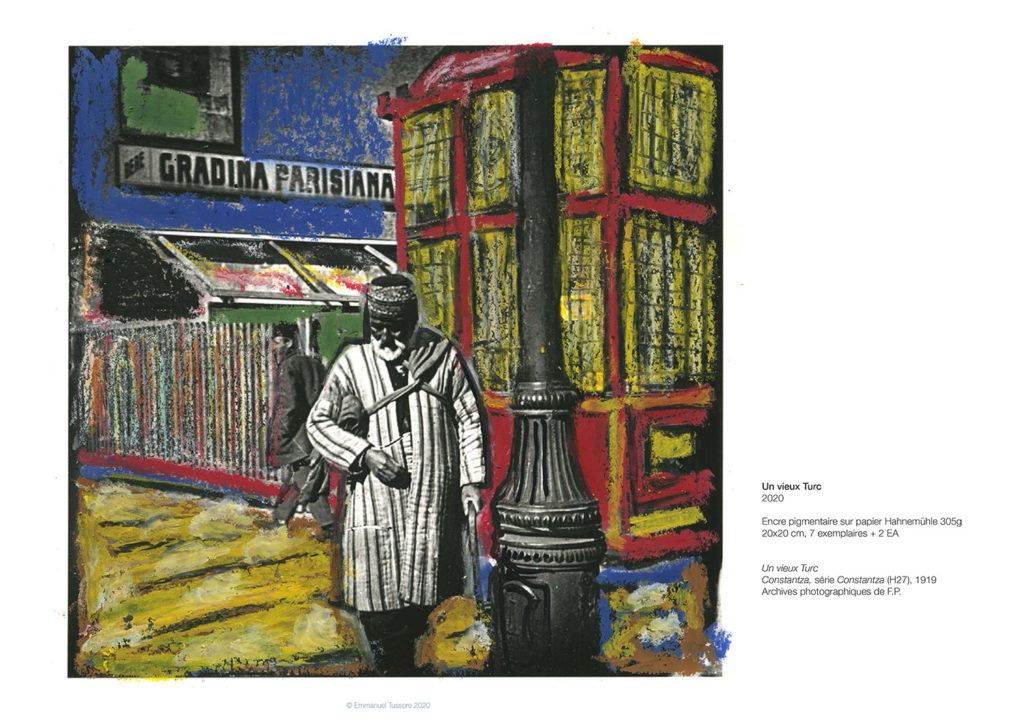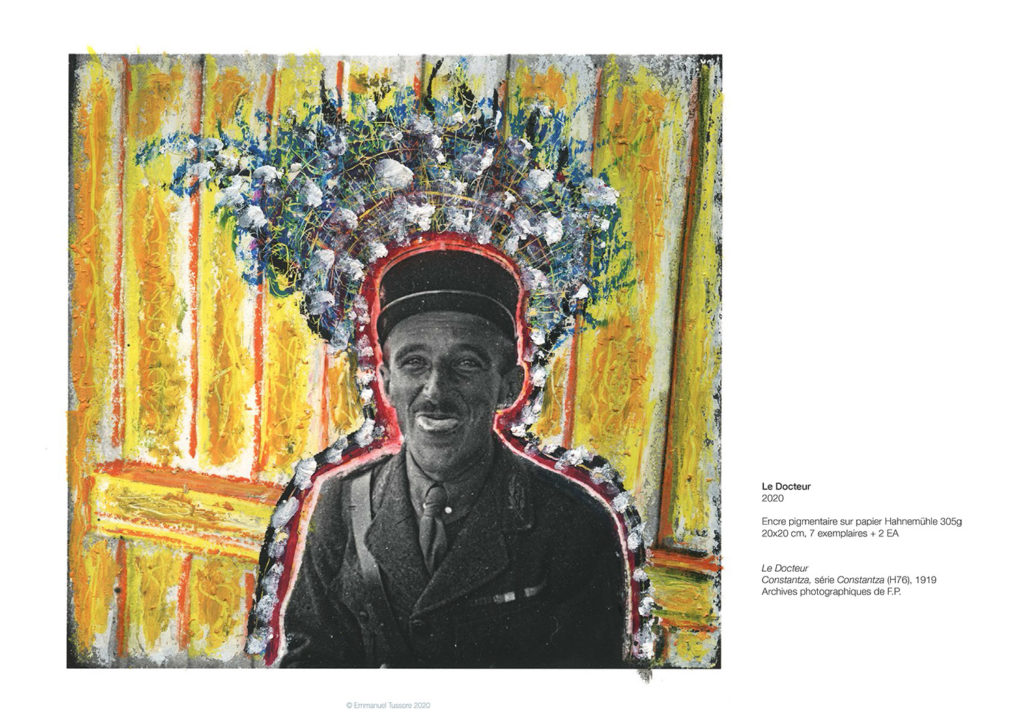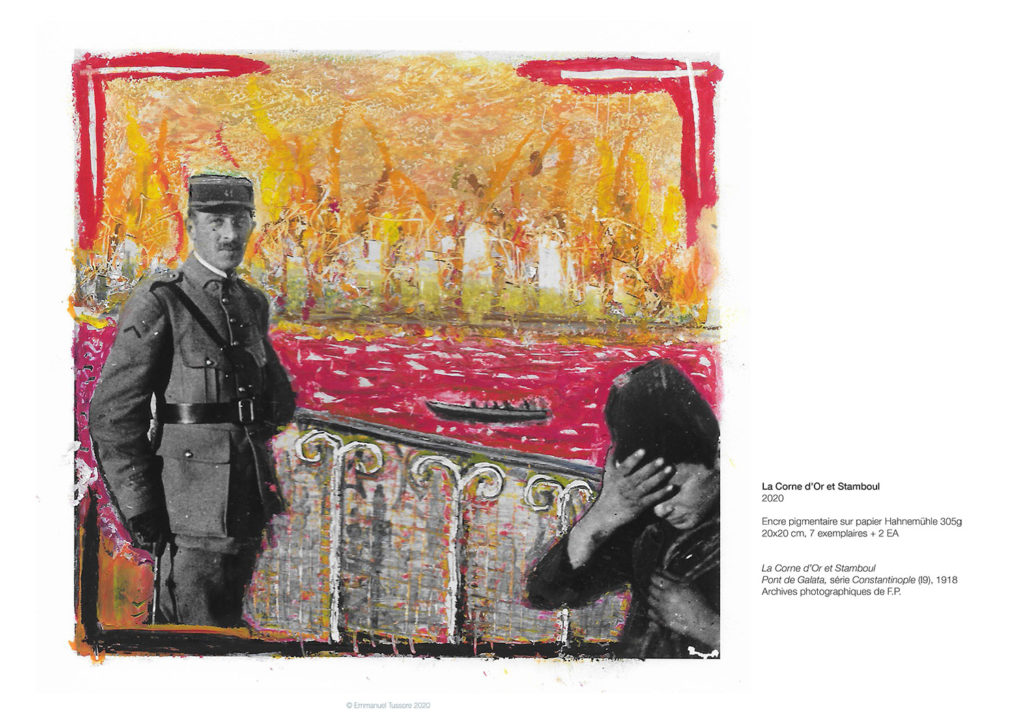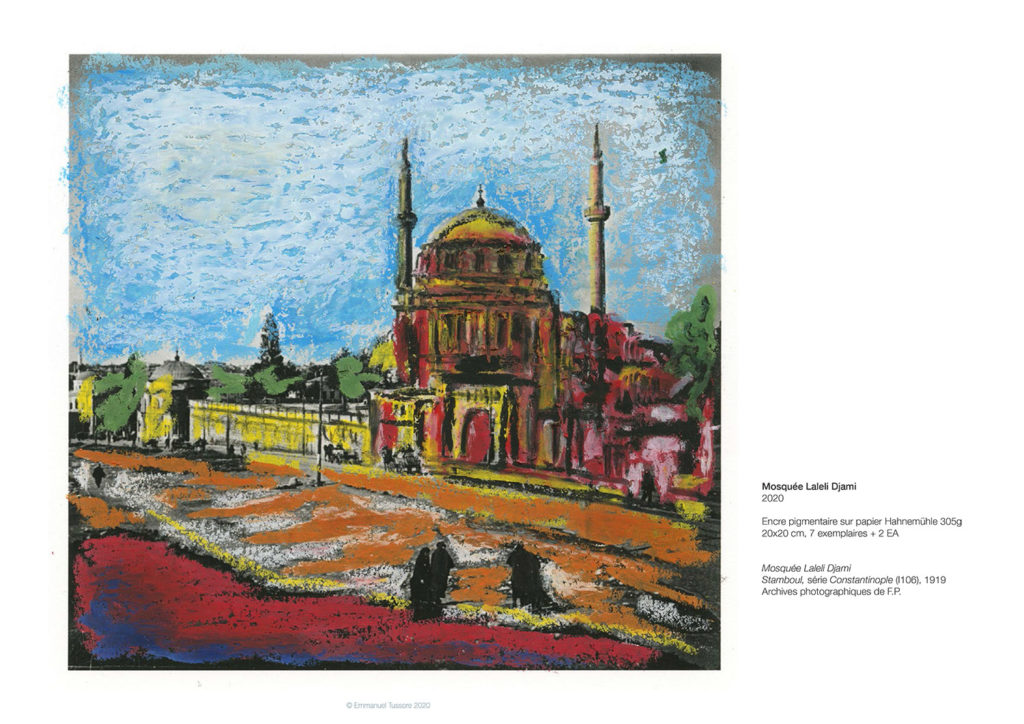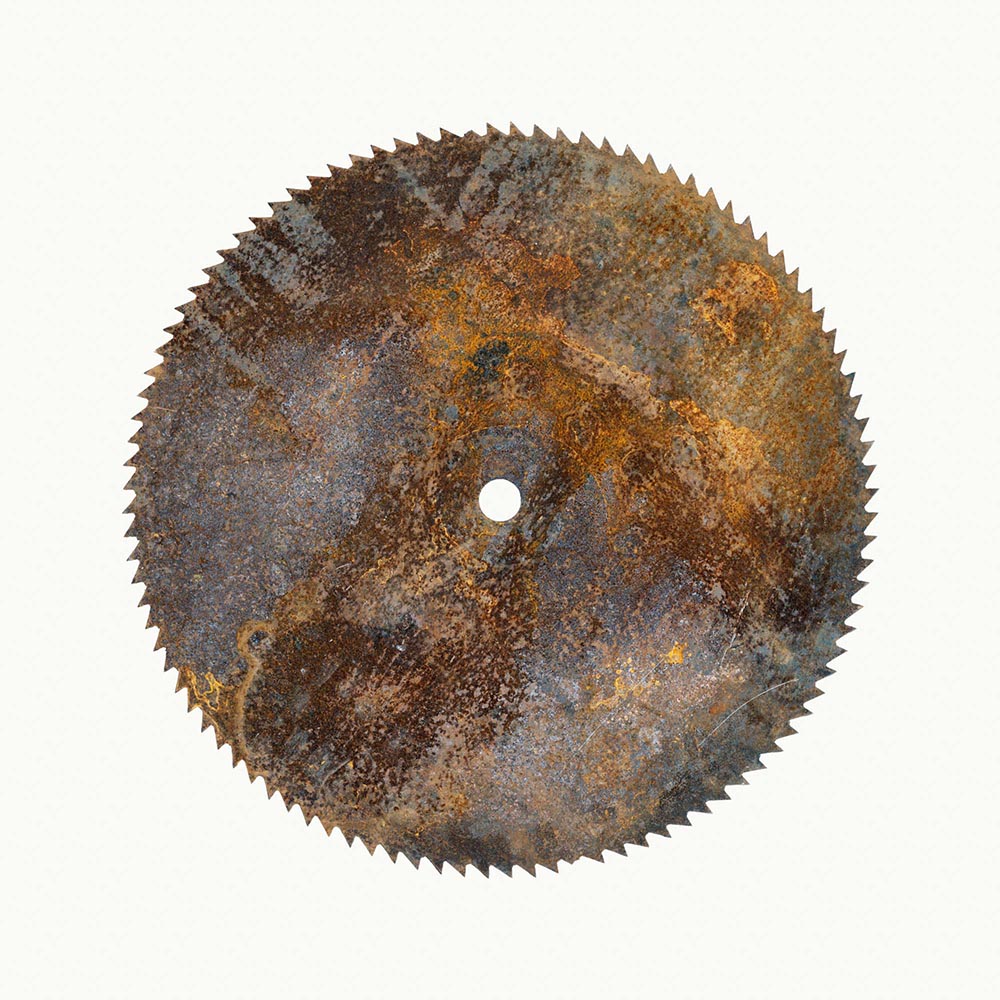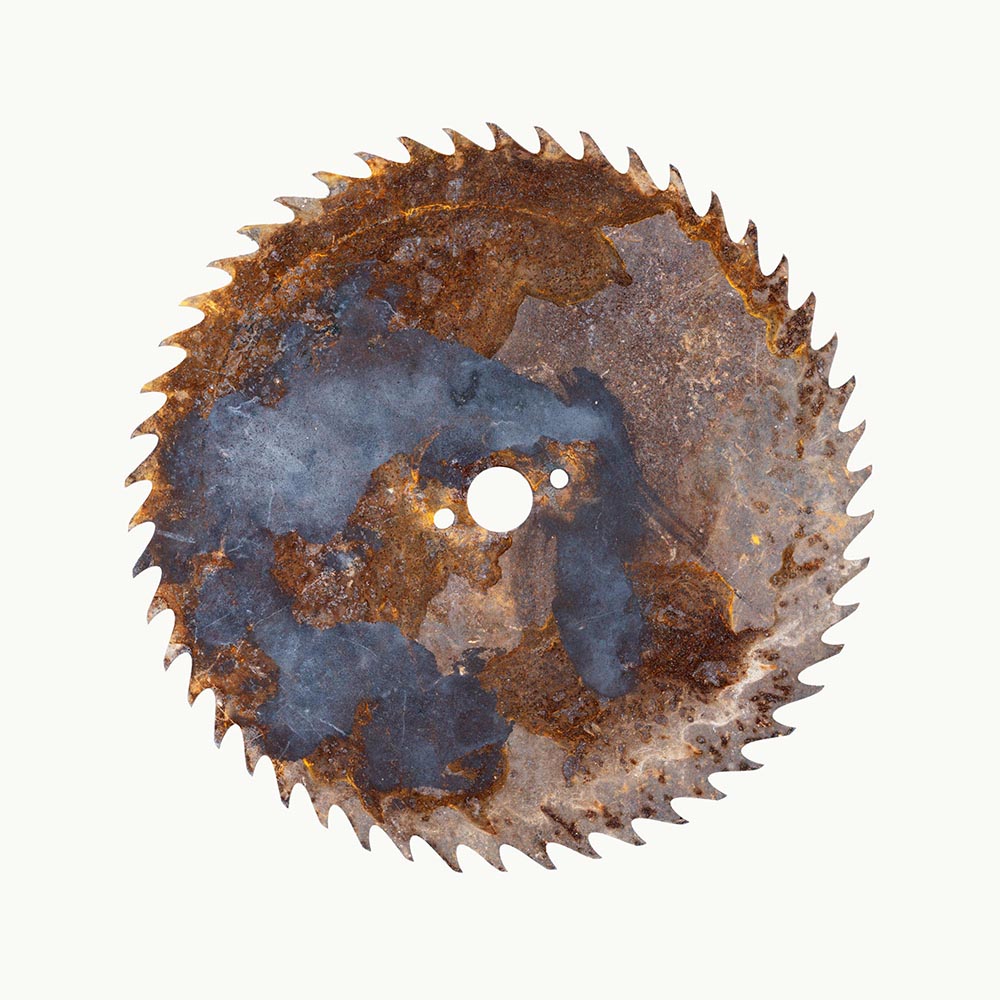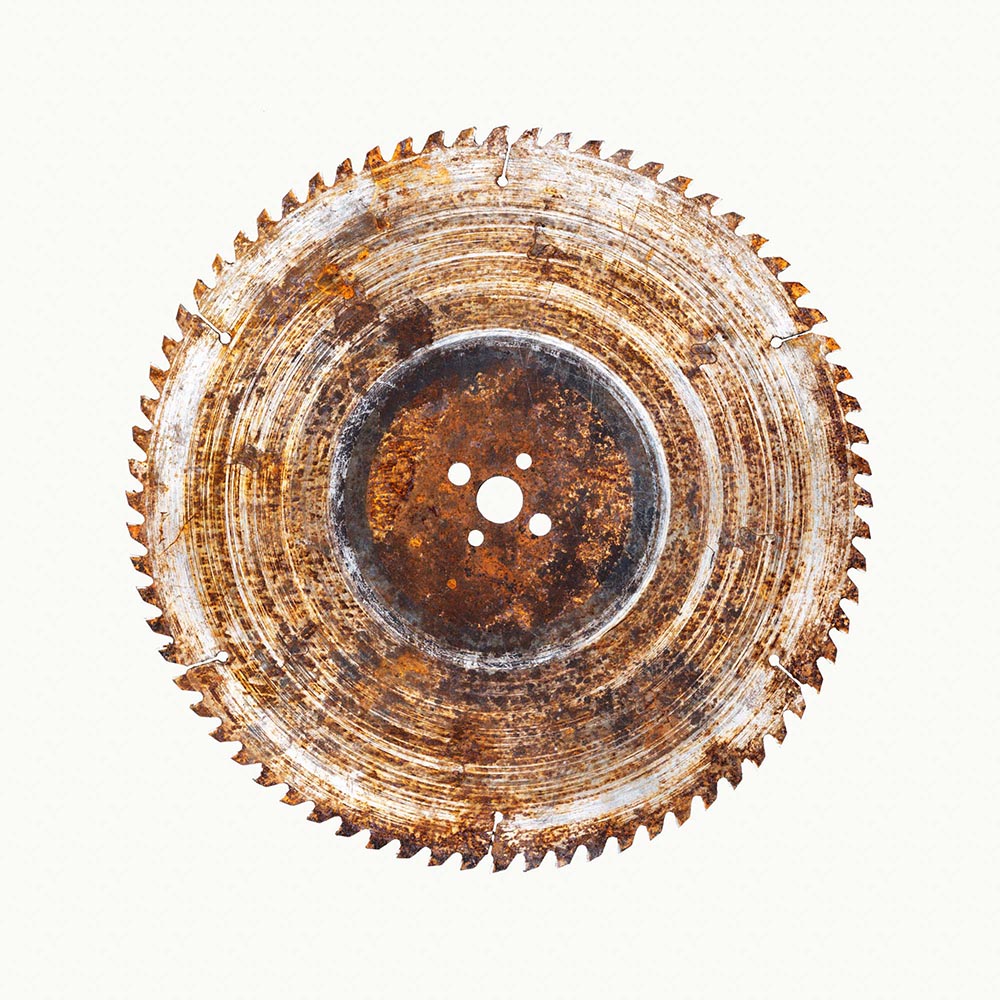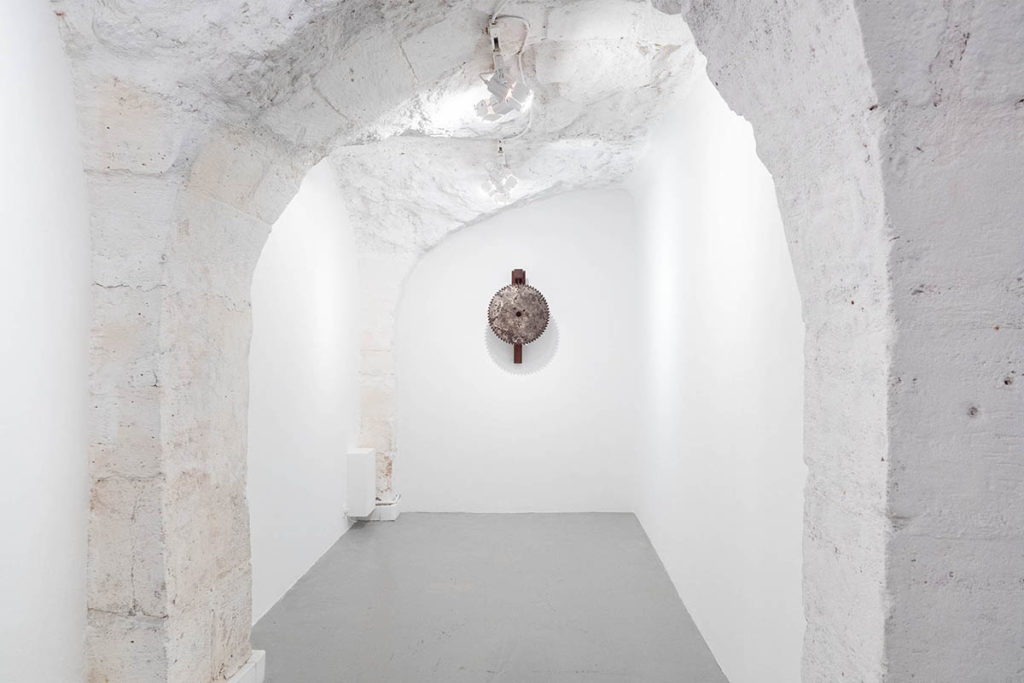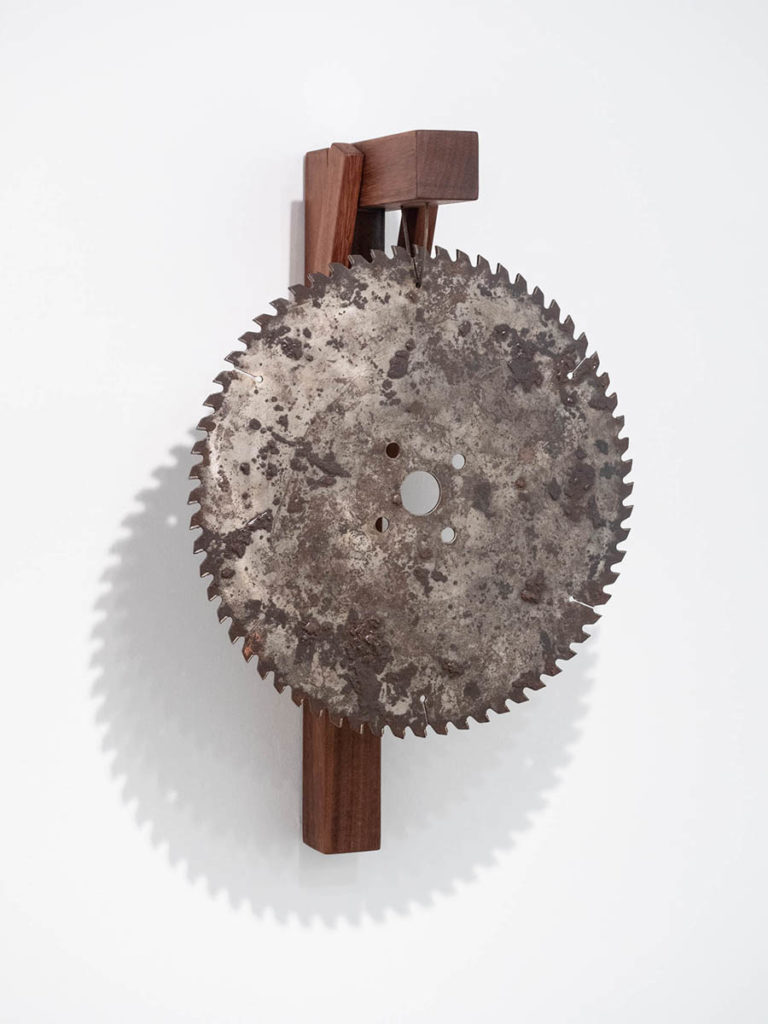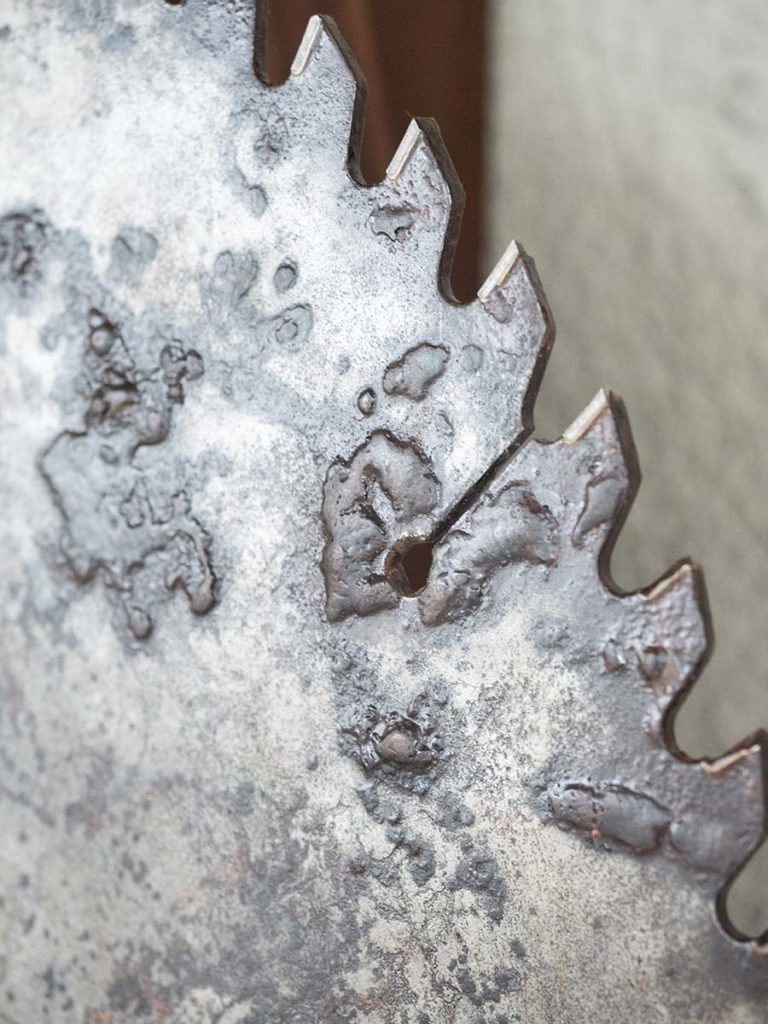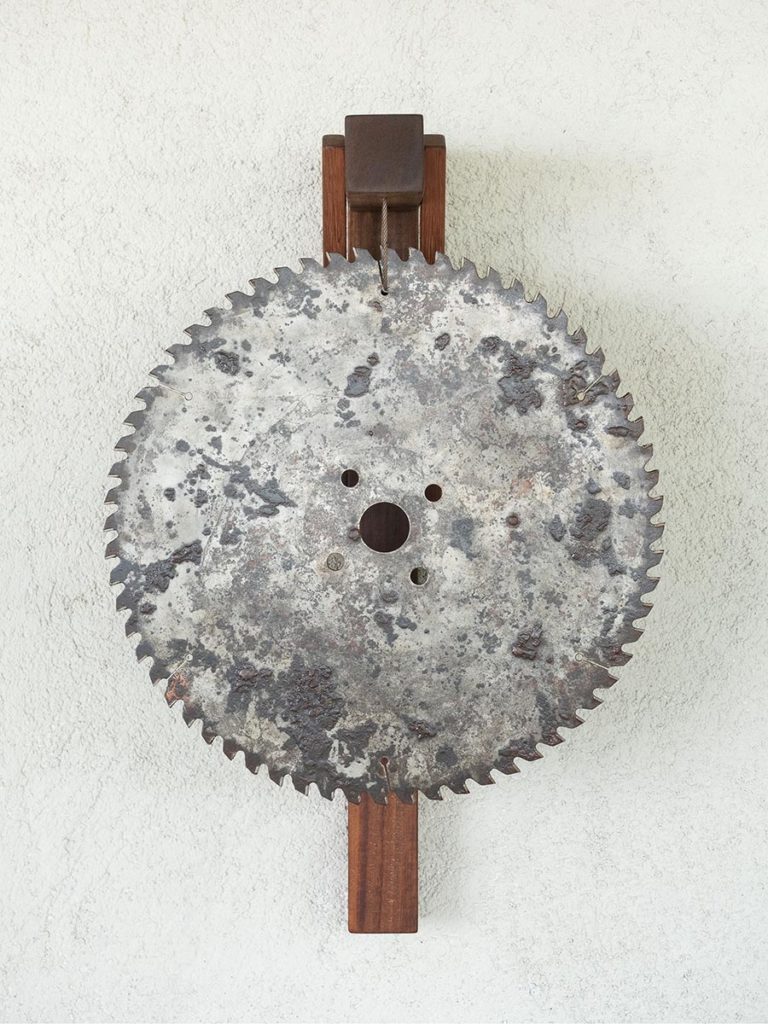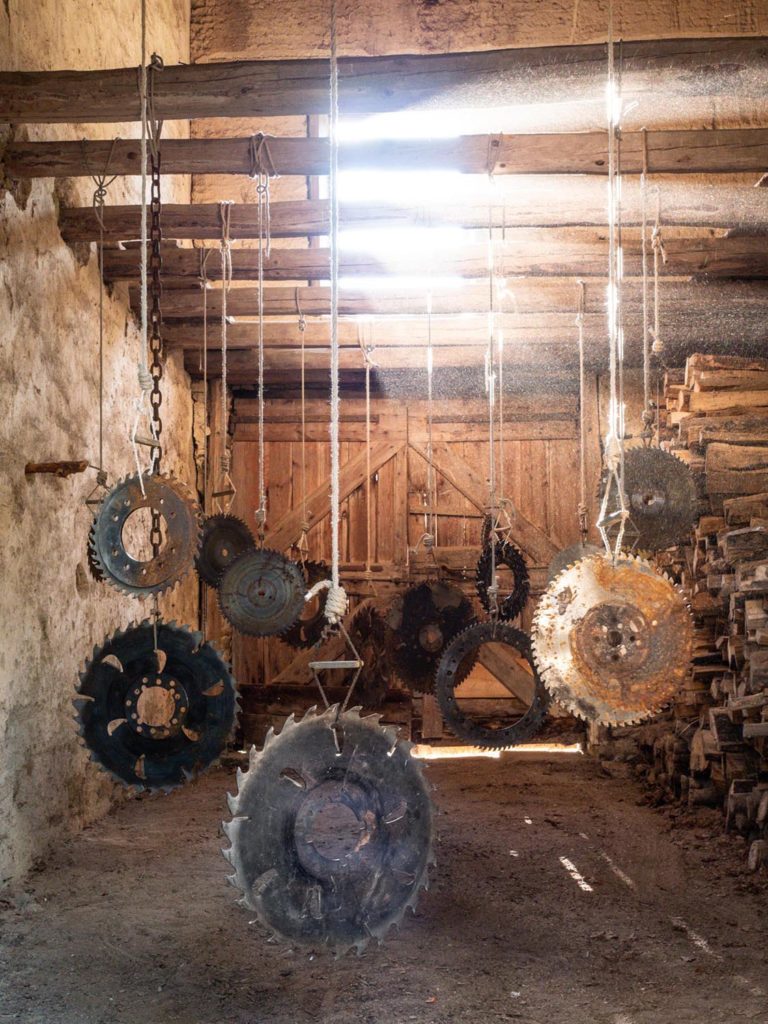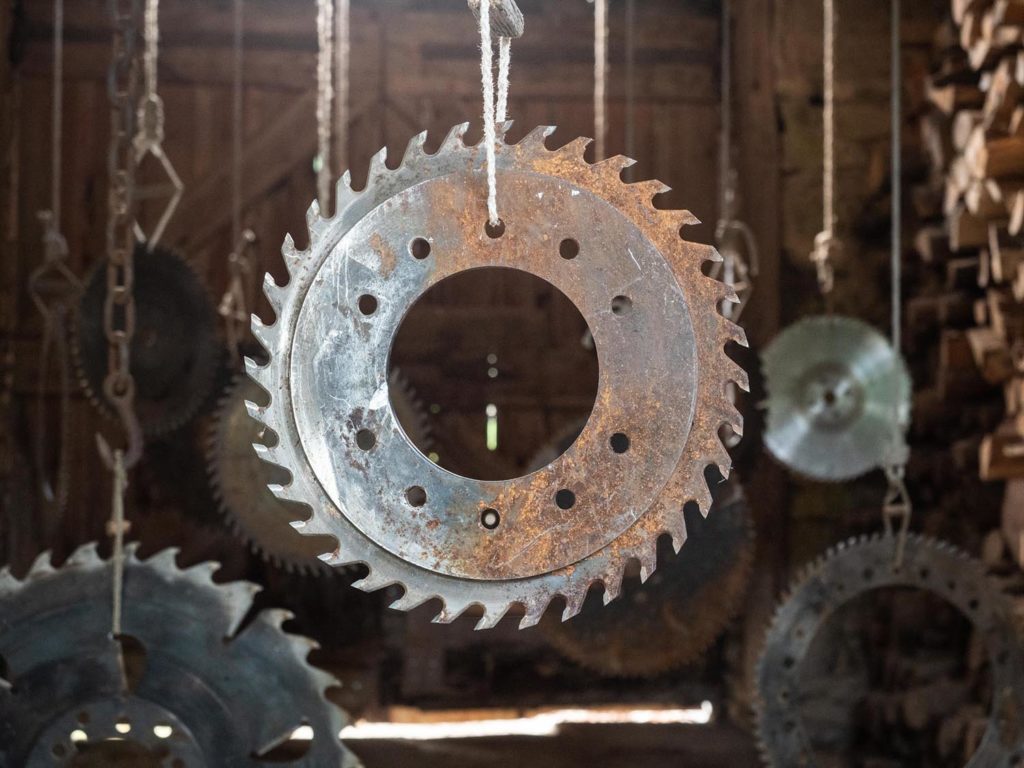Artforum (USA) | 14th Dak’Art Biennial of Contemporary African Art (by Allison Young)
Artforum (USA) | 14th Dak’Art Biennial of Contemporary African Art (by Allison Young)
Ocula Magazine | At Dak’Art 2022, Art Pulsates Through the City (by Emeka Okereke)
New York Times (USA) | In Dakar, African Art Speaks in All Its Voices (by Siddhartha Mitter)
Study for a soap
The process of soap-making was developed in the earliest antiquity in the Levant region. Following the decline of the Roman Empire, soap was reintroduced and spread in the West by 12th century Crusaders. Tussore uses this fragile and malleable organic matter as a medium in a series of sculptures, installations, photographs and films. In his hands, Aleppo Soap – the oldest soap in the world – shifts from the refined gesture of the civilized man to become the symbol of a destructive and brutal force. His ruins suggest the characters of a mysterious alphabet telling of absence, loss, exile, thus questioning the fundamental notions of humanism. Highlighting the remains of an intimate story as part of the collective memory, they allow all hopes for a possible reconstruction.
The video installation Study for a soap scrutinizes a sculpted Aleppo soap placed on an electric turntable. Filmed from different angles by surveillance cameras, the black-and-white images of the ruins are broadcast live on cathodic monitors erected in a tower, totem of Western architecture. The installation reflects upon the trivialization of violence using the visual aesthetics of modern war seen from above, those of drones widely disseminated in the media.
Promenade de digestion
At the turn of the 20th century, between 1917 and 1920, a young French officer candidly photographs behind the scenes of WWI, from Europe through the Balkans to Constantinople. At the turn of the 21st century, an artist stubbornly delves into the tragedy of an era furiously coloring the prints, highlighting the passage of history. Caught in the nets of a harsh light, faces and bodies, by their magnetic presence, confront us with our own present.
Requiem
Emmanuel Tussore collects circular saw blades from waste recycling centers in areas with heavy logging industry. Ultimate tools for a programmed destruction of forests, these metal discs are used to cut down trees and transform the wood for domestic use. Manipulated by the artist, then photographed, the medium is no longer the sharp and deadly steel. It has metamorphosed into a celestial body, one that can only be seen through an astronomical telescope. The distant landscapes reveal rocky canyons and rusty mountains, craters firing magma in fusion, or perhaps comet tails with stardust slipping away. Those maps of another world mirror us back to our own origins, the nourishing and protective planet Earth. Despite its transformation, the original cutting tool retains the memory of the living. The subtle imprint of the sinuous and colorful bark can eventually be read in the background. Through dozens of revisited saw blades, an imaginary catalog unveils, both poetic and symbolic.
Performance 2019 , 2:55′
Galerie Dohyang Lee, 2020

